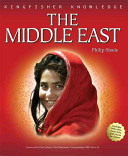
The Middle East captures the richness and diversity of Middle Eastern culture, and places the region in its global context in a way that no other reference has done for this age group.

The Middle East captures the richness and diversity of Middle Eastern culture, and places the region in its global context in a way that no other reference has done for this age group.
A brilliant, concise history of The War to End All Wars.In the decade leading up to 1914, Europe had never known such prosperity. But the times were not good enough for the continent’s most powerful nations: Germany wanted a navy that matched England’s; Russia wanted an army as large and as disciplined as Germany’s; the Austro-Hungarian Empire wanted more respect; and England felt compelled to teach the others about civilized relations. Meet the soldiers who fought the deadly battles along the Western Front. Follow the trail of flying ace Billy Bishop as he tangles in the air with the Red Baron. Learn the strategy of Britain’s Grand Fleet of warships as it heads into the biggest sea battle in history.
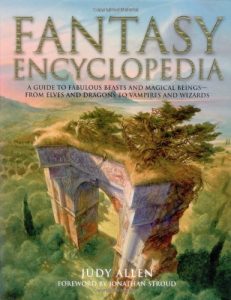 With a foreword by the award-winning fantasy author Jonathan Stroud, and illustration by some of the world’s best illustrators including John Howe, the Fantasy Encyclopedia is a spectacular one-stop guide to the creatures and people of folklore and fantasy. From goblins and fairies to dragons and Dracula, this encyclopedia covers them all with sparkling, readable text and stunning illustrations. Discover how the magic of stories throughout the centuries has kept these creatures alive in traditions and cultures around the world. Using a highly visual approach, featuring more than 400 photographs and illustrations, this book will introduce readers to each fantasy character within its habitat and genre. Cross-reference boxes direct readers to popular books and movies starring these fantastical creatures. This is a must-have for any fantasy enthusiast!
With a foreword by the award-winning fantasy author Jonathan Stroud, and illustration by some of the world’s best illustrators including John Howe, the Fantasy Encyclopedia is a spectacular one-stop guide to the creatures and people of folklore and fantasy. From goblins and fairies to dragons and Dracula, this encyclopedia covers them all with sparkling, readable text and stunning illustrations. Discover how the magic of stories throughout the centuries has kept these creatures alive in traditions and cultures around the world. Using a highly visual approach, featuring more than 400 photographs and illustrations, this book will introduce readers to each fantasy character within its habitat and genre. Cross-reference boxes direct readers to popular books and movies starring these fantastical creatures. This is a must-have for any fantasy enthusiast!
A faith like mine is a 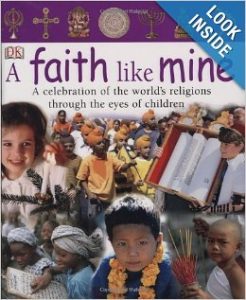 celebration of the diversity of religious faith, as experienced through the daily lives of children around the world. What do other people believe? How do they pray? When are their holy days? What are the differences between churches, temples, & mosques? ” Come & visit us & our friends to find out what we believe in & how we practice our faith.”
celebration of the diversity of religious faith, as experienced through the daily lives of children around the world. What do other people believe? How do they pray? When are their holy days? What are the differences between churches, temples, & mosques? ” Come & visit us & our friends to find out what we believe in & how we practice our faith.”
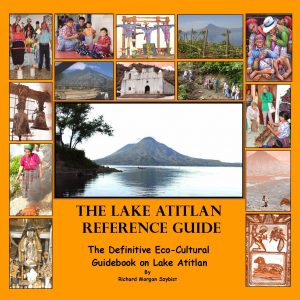 The Lake Atitlan Reference Guide is an eco-cultural guide to the lake identified by Aldous Huxley (Brave New World) as “the most beautiful lake in the world.” Atitlan is a volcanic caldera, located at 5,000 ft above sea level in the Mayan highlands of Guatemala. Atitlan means “at the water.” It is a fusion of simple Nahuatl words that belies the complexity of the entity it identifies. Lake Atitlan is both a place and an event in motion. Its life incorporates the visually stunning character of one of nature’s most ambitious creations and the extraordinarily diverse cultural character of the human life that the Lake has drawn to its shores. Atitlan was born violently, long ago, probably before the emergence of man here. Scientists still debate the exact nature of its birth, an event which created a nearly circular depression of 11 miles in diameter, 95 square miles of area, and over 1,000 feet deep. The cause of this huge cavity, a chain of events which began with an immense eruption, produced a unique microenvironment that has been drawing wanderers to the Lake’s shores for at least thousands of years. Cultures have clashed to control it. Vagabonds have been absorbed by it, laid down roots, and quit “moving on.” Traveling notables have been overwhelmed by its beauty and written about it in the loftiest of terms. Any effort to empirically order the kaleidoscope of its elements is ultimately challenged by the spiritual and physical immensity of the subject. This work makes no such attempt. What is offered here instead is a summary of the Lake environment in terms of its physical location and nature, its cultural history, and its contemporary political and socioeconomic life. The text is supported by more than 100 quality fotos (most in color) and a variety of other illustrations.
The Lake Atitlan Reference Guide is an eco-cultural guide to the lake identified by Aldous Huxley (Brave New World) as “the most beautiful lake in the world.” Atitlan is a volcanic caldera, located at 5,000 ft above sea level in the Mayan highlands of Guatemala. Atitlan means “at the water.” It is a fusion of simple Nahuatl words that belies the complexity of the entity it identifies. Lake Atitlan is both a place and an event in motion. Its life incorporates the visually stunning character of one of nature’s most ambitious creations and the extraordinarily diverse cultural character of the human life that the Lake has drawn to its shores. Atitlan was born violently, long ago, probably before the emergence of man here. Scientists still debate the exact nature of its birth, an event which created a nearly circular depression of 11 miles in diameter, 95 square miles of area, and over 1,000 feet deep. The cause of this huge cavity, a chain of events which began with an immense eruption, produced a unique microenvironment that has been drawing wanderers to the Lake’s shores for at least thousands of years. Cultures have clashed to control it. Vagabonds have been absorbed by it, laid down roots, and quit “moving on.” Traveling notables have been overwhelmed by its beauty and written about it in the loftiest of terms. Any effort to empirically order the kaleidoscope of its elements is ultimately challenged by the spiritual and physical immensity of the subject. This work makes no such attempt. What is offered here instead is a summary of the Lake environment in terms of its physical location and nature, its cultural history, and its contemporary political and socioeconomic life. The text is supported by more than 100 quality fotos (most in color) and a variety of other illustrations.
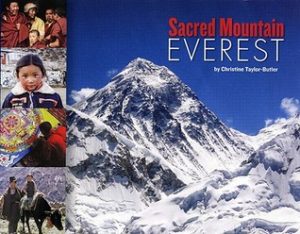 A cultural, geological, and ecological history of Mount Everest focusing on the indigenous Sherpa and their spiritual connection to the mountain, record-setting multinational climbing expeditions, and the effects of tourism on the environment. Illustrated with photographs, maps, diagrams, and timelines.
A cultural, geological, and ecological history of Mount Everest focusing on the indigenous Sherpa and their spiritual connection to the mountain, record-setting multinational climbing expeditions, and the effects of tourism on the environment. Illustrated with photographs, maps, diagrams, and timelines.